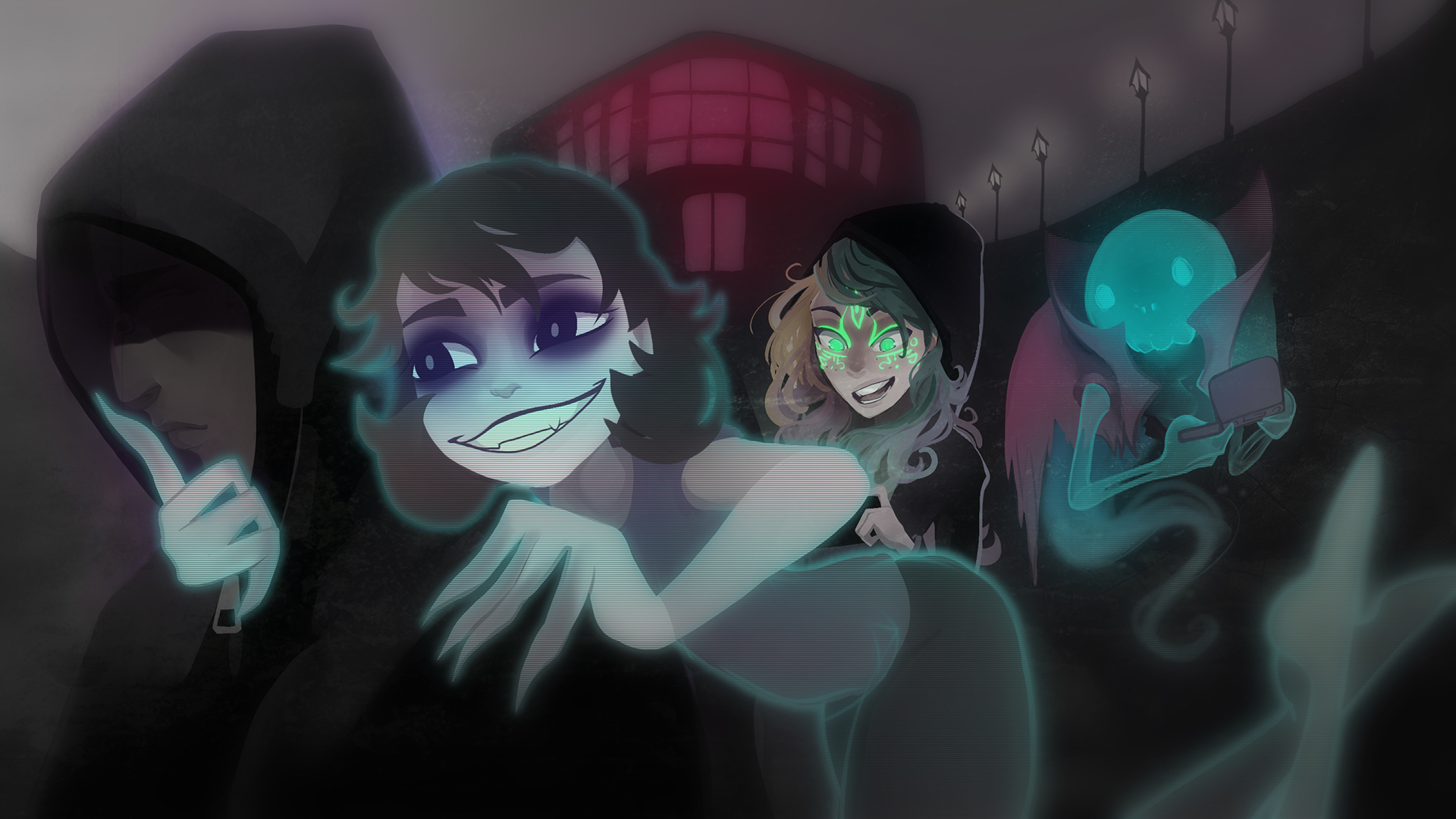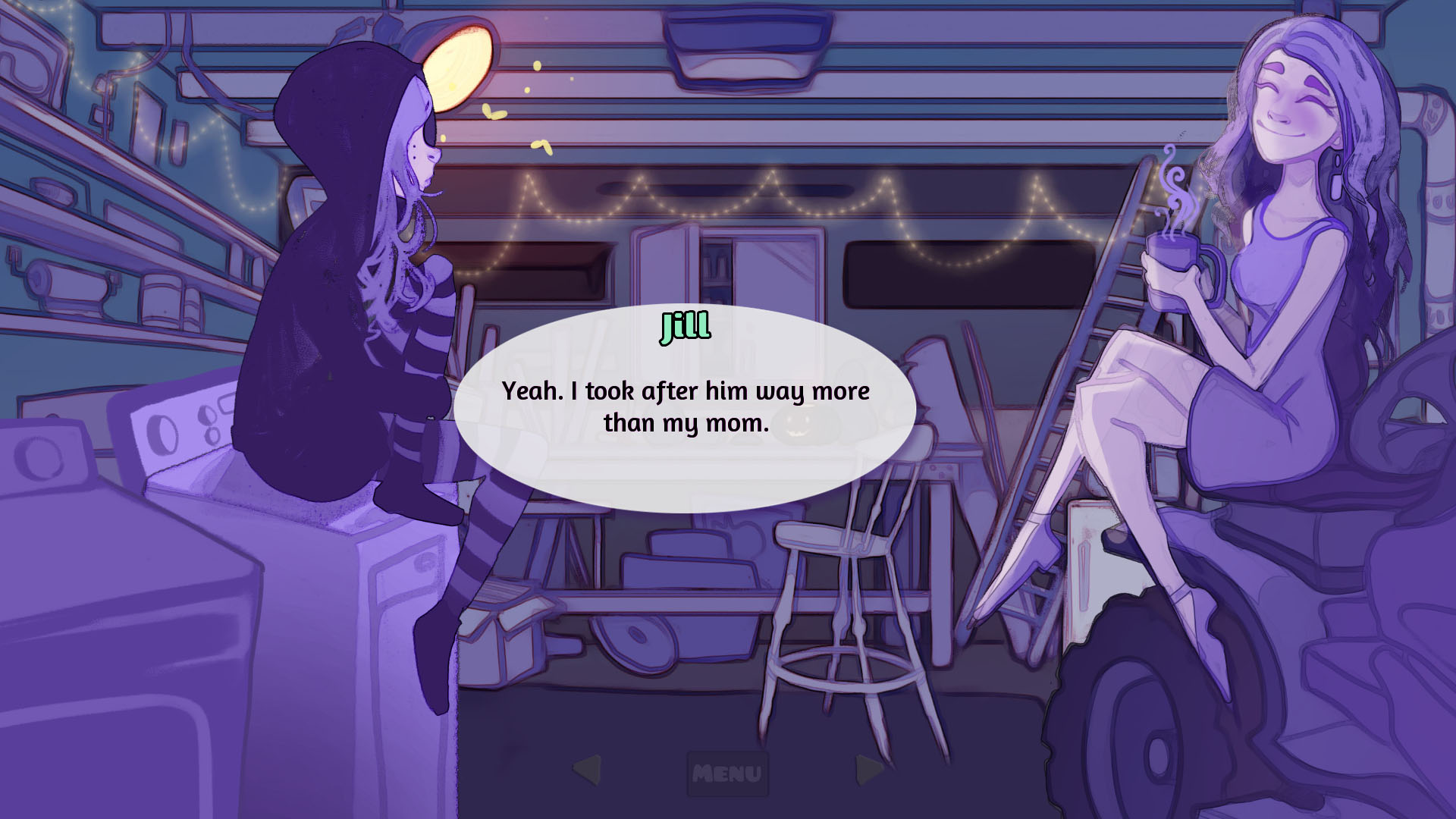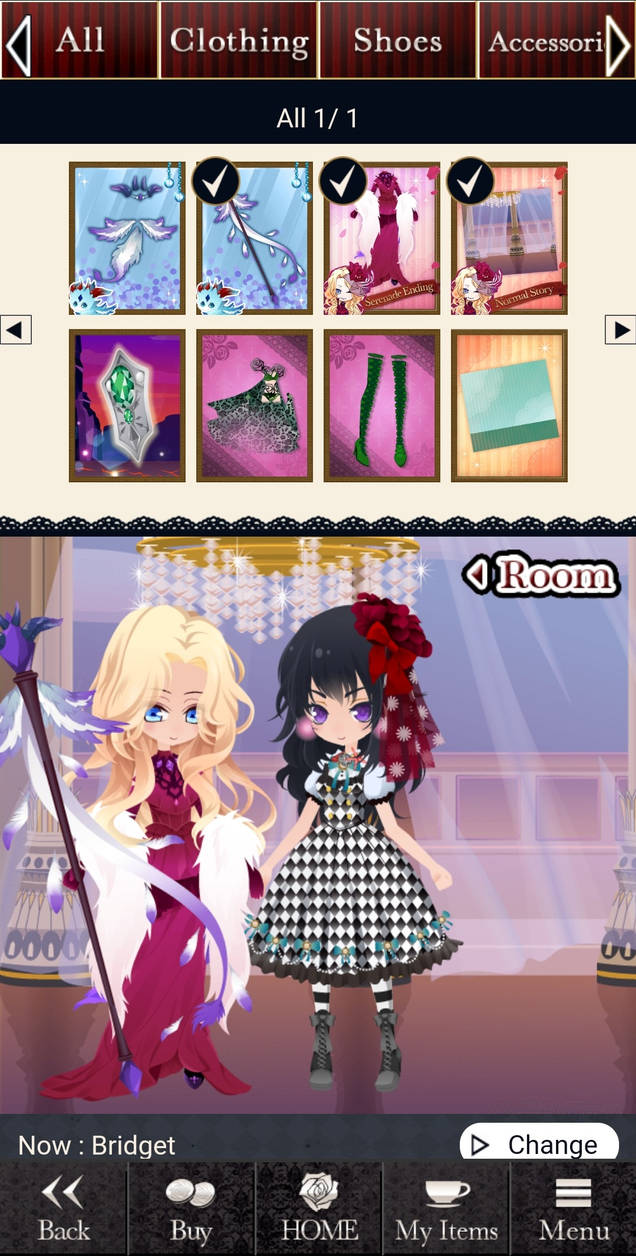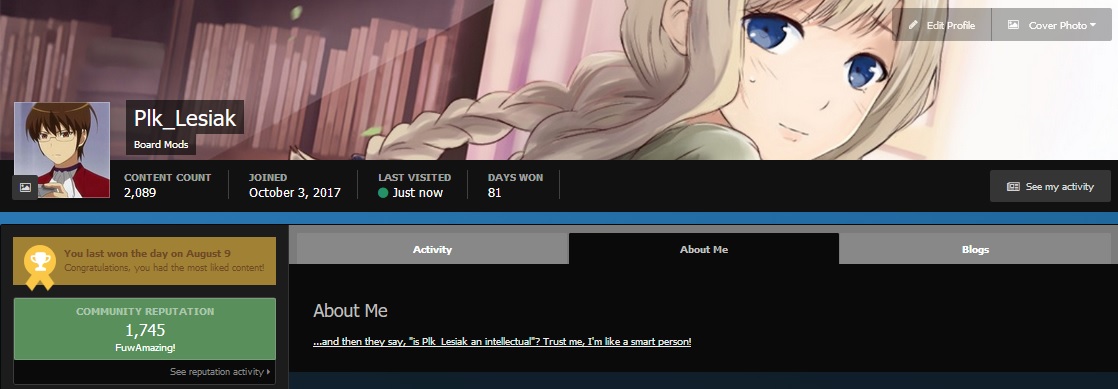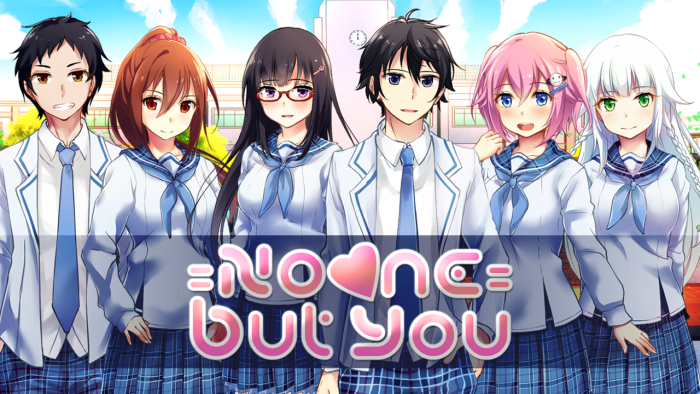In our obscure EVN market, there are rarely games or events that could be described as major controversies – even the most unfortunate releases or Kickstarter disasters usually don’t involve enough people and money to gather the attention of the community for a longer period of time or spark a mass backlash. Along with Aeon Dream Studios’ k-pop fan game debacle (a really amazing story of incompetence and borderline-fraud, if you care to follow it), No One But You is possibly the most controversial and polarizing EVN ever released. Appearing on the relatively-barren landscape of early 2015 and promising experience similar to the high-budget Japanese VNs, it sparked a lot of interest and hope for the second coming of Katawa Shoujo – an EVN that would not feel overly niche or amateurish, but actually capture the charm of beloved Japanese titles and rival them in its storytelling.
The reality, of course, proved much more underwhelming. The unexpected Kickstarter success (the campaign reached over 1200% of the initial, $1200 goal) resulted in a highly upscaled and complex project, developed within just a year by then still-unexperienced Unwonted Studios. Involving a network of over a dozen writers and artists, and a heavily-rushed release (which was never moved from the initial KS campaign claim despite of many major features being added through stretch goals), No One But You was eviscerated by many reviewers, with Fuwanovel notably giving it lowest possible score in two separate articles, and received only a mixed reception from the readers after showing up on Steam on January 2016. In a way, it remains one of the most infamous story-centric EVNs, possibly only beaten by the cheap ecchi titles such as Sakura games in the amount of hate and ridicule it gathered. However, looking at it three years later and with all the fixes and additional content added post-launch, is it really that bad?
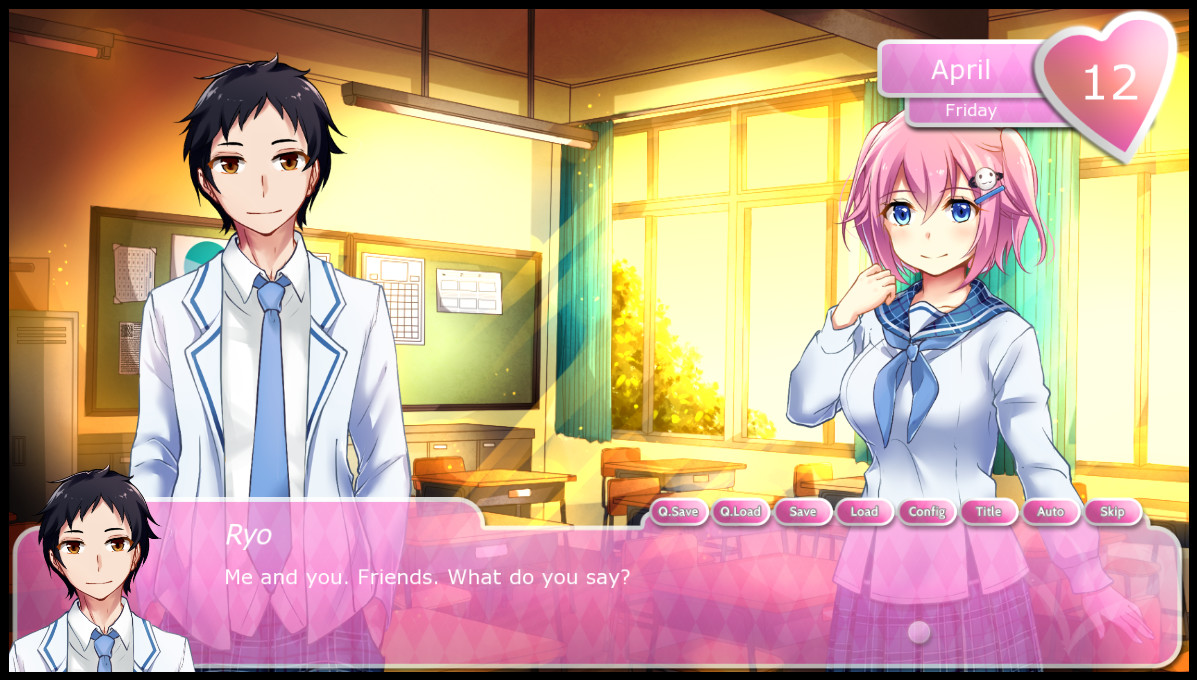
The opening sequences of No One But You make it look like your typical, cute moege with minor mystery elements, making the whole experience something of a bait-and-switch
The first thing worth addressing when looking at No One But You is its production quality, which is both one of its biggest strengths and possibly suffered the most from the rushed release. The character sprites and CGs are of really good quality, with all the characters (including the protagonist, who thankfully isn’t a faceless mannequin) being nicely designed and pleasant to look at. The designs of the heroines are admittedly so standard that you can immediately recognize the archetypes each girl represents just after looking at her for a few moments, but that doesn’t nullify the sheer appeal of the character art. This part of the game is also, unlike in many other EVNs from that era, quite consistent both in style and quality – the CGs might not be very numerous or spectacular, but they are good enough to do their job effectively and do not clash with the other assets, while the sprites are pretty and expressive enough to carry the more casual/SoL scenes. Backgrounds, on the other hand, are anything but consistent: while some are absolutely gorgeous, many more, including frequently used ones like the protagonist’s kitchen, look overly-simplistic and undercooked. This might slide if you don’t pay much attention to details, but it’s still a huge shame it spoils the great first impression character art offers. Also, the illustrations are at times clearly mismatched with the game’s text or the scenes that lead up to them, the most striking example being a CG in Yui’s route, in which a long sequence happening on a rainy evening suddenly transfers to broad daylight, with blinding sun rays all over the place. Such obvious mistakes devalue the art and kill the emotional impact of some of those crucial scenes.
The soundtrack is another interesting topic, as it consists of an impressive number of 34 instrumental tracks, including character themes and melodies unique to important story sequences. It’s not brilliant by any means, but solid enough to enhance the climate of the game and represents a level of effort few EVN devs are willing to put into this area. There’s also the opening song with Japanese vocals, included in an update some time after the initial release of the game – a decent, but arguably pointless addition, as I imagine most people finished the VN before it was implemented and while they could come back for other content added post-launch, such as afterstories and h-scenes, they had little reason to revisit the beginning of the game. This can also be a general comment on how the launch was handled – pushing the game out in such a bare-bones state and fulfilling most Kickstarter promises months later undoubtedly contributed both to many of its persistent problems and the atrocious initial reception it received. Some major promises, like the English voice acting, manga adaptation and a sequel never even materialized, adding to backers' disappointment, while others were realized in a manner that hardly matched what was promised – this particularly applies to afterstories, presented in the campaign as major extra chapters but which proved to be just brief epilogues.
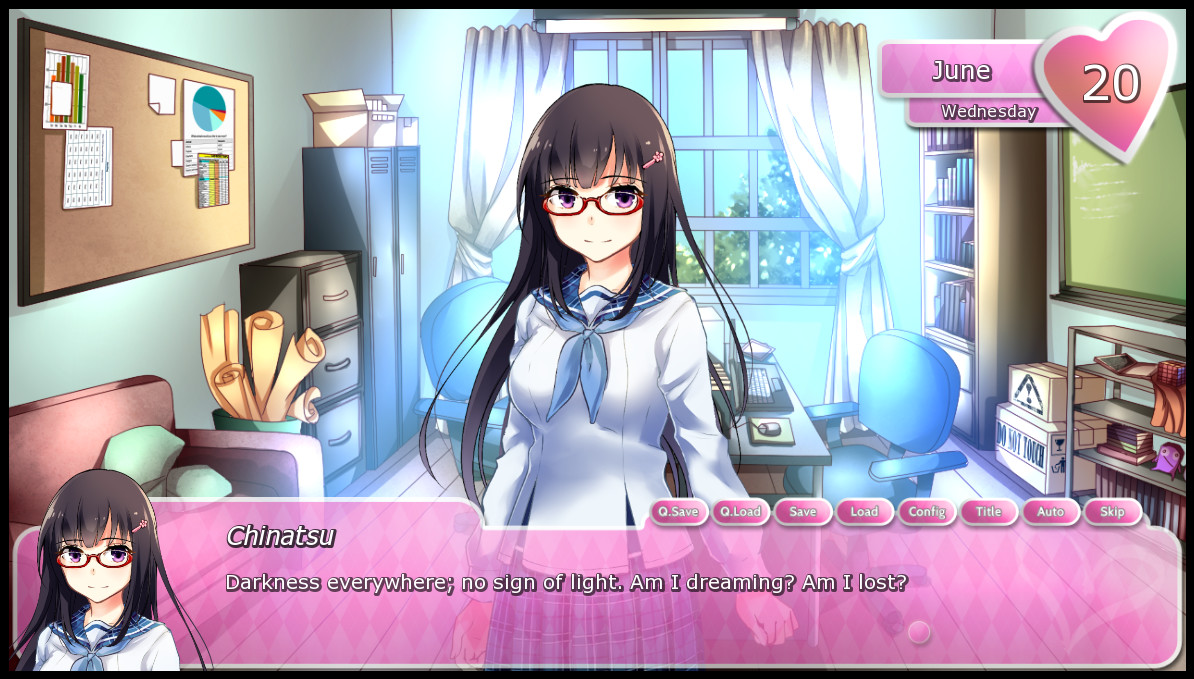
The tropy heroines and predictable twists make even the better elements of the story, like the Chinatsu route written by ebi-hime, quite underwhelming
So, what No One But You is actually about? The initial setup is as standard as it goes – a perfectly-generic Japanese high-schooler, Hideaki, moves back to his hometown after many years of living in a bigger city. In the new school he quickly manages to make new (female) friends – a cheerful and strangely clingy student council member Megumi, reclusive beauty Shiro, standoffish redhead Yui and a studious senpai named Chinatsu. He also reluctantly becomes friends with the class clown Ryo and at this point, it looks like nothing will disturb his fun in the new school. Only strange, recurring dreams of drowning suggest an underlying mystery connected to protagonist childhood and the reason his family left the town in the first place. If you thought, however, that this game is a moege with slight drama/mystery elements, you couldn’t be more wrong – in depending on the route it varies between a rather poor attempt at nakige to a full-on utsuge, with over-the-top depressing, edgy plot developments and endings.
Past the average and trope-filled, but reasonably enjoyable common route, the game is at its absolute worst in Shiro’s and Megumi’s routes, the former featuring some comically-incompetent yakuza going after heroine’s father, and the latter a paedophile-murderer teacher who apparently managed to stay in the profession after brutally killing a student in broad daylight, with multiple witnesses. To say these scenarios make little sense is an understatement – they are utterly absurd from start to finish and at times plain uncomfortable to read due to the protagonist’s questionable behaviour. Or course, the worst of his actions are usually completely unavoidable (like the extremely messed up h-scene near the conclusion of Megumi’s route, but also the over-the-top cruel rejection he gives her in Shiro’s arc) – this easily kills the last bit of immersion the numerous plot holes and absurdities didn’t already murder. Yui’s route is mostly on the opposite side of the spectrum, being quite down-to-Earth and using a relatable theme of bullying, spoiling it slightly through the inclusion of some anime romance clichés (notably forgotten childhood promise), but being ultimately pretty sweet and satisfying. It also offers one of the two genuinely good endings present in the game, where for once no one dies or get traumatized for life (that's, of course, only if you make the right choices, as her worst ending is also notably over-the-top). The second positive conclusion available in No One But You is a major surprise – it shows up in Ryo’s route, which might at first look like a throaway scenario for those players that didn't manage to get any of the girls, but quickly transforms into a slightly vague, but still easily-readable BL scenario. Storytelling-wise, it’s arguably the best part of the game – it involves Ryo’s toxic family relations and the feelings of rejection and depression he hid under the façade of a cheerful class clown. Not a particularly novel idea, but still way more interesting than what rest of the VN had to offer and I applaud the dev's courage to include this kind of romance in an obviously male-targeted title.
The last storyarc I didn’t address is Chinatsu’s route, notably written by ebi-hime (whose pen name was gracefully misspelt as "ebi-himi" in the credits). It’s a fully-linear scenario that is deeply intertwined with the protagonist’s backstory and is overall very competent. However, the main mystery in it is very easy to read, just with the clues offered in the common route and the storyarc itself suffers from the same problem Shiro’s and Chinatsu’s stories did – the overexposure to tragedy and over-the-top plot developments quickly makes you numb and kills the emotional impact the writer was going for. This is also related to the fact that the route, just like all the other ones, felt heavily rushed – with around 10 hours of content No One But You is hardly short for an EVN, but nowhere near long enough to handle five dramatic, complex storyarcs, or develop its cast of characters properly. In a way, it feels like one of those overly-condensed anime adaptations that cut and modify massive source material to fit it into tight screen time, to the point it loses any semblance of coherence or depth. The one, crucial difference being that Unwonted Studios have no excuse for why they let it happen, apart from chasing the unreasonable deadline they set out for themselves.

No One But You’s visuals, and its production quality in general, are rather good for an EVN of that era, but can only do that much to compensate for often dreadful writing past the common route
One of the common complaints about No One But You is connected to its extremely shameless copying of JVN storytelling tropes and stylistics, to the point that even its language looks a bit like a fan translation of a Japanese game. To some extent, however, I think this criticism was overblown – while the game’s setup is indeed extremely iterative, adherence to tropes is not really a major problem past the common route. Also, some “inconsistencies”, like the use of honorifics, seem pretty deliberate – Japanese mannerisms show up mostly in really fun sequences of characters texting to each other, which emulate the style of writing teens would use in that context. While the game definitely struggles with its identity and writers had a hard time restraining their otaku sensibilities, I think even most reviewers would easily look past this if the core story wasn’t so kitsch and, well, plain stupid much of the time.
One last thing that I should probably mention are the h-scenes – there’s one for Megumi, Shiro and Yui, but I’ll be completely honest that knowing in what context Megumi's scene happens and seeing one still of it on VNDB, I wanted nothing to do with any of it. As I kentioned before, all scenes were added to the game after release, along some other promised features such as the afterstories (those, BTW, in many cases added very little to the respective routes or even attached a new layer of stupidity and inconsistency to them, particularly in Shiro’s case), being more of a minor bonus then a selling point. Other illustrations might be less broken than the one I was referring to, but it’s still probably not something you should seriously take into consideration when deciding whether to give this game a try. And staying on this topic, I'm not sure I consider No One But You worth buying as anything more than a curiosity – it has its moments and won’t bore you the way the recently-reviewed Sakura MMO would, but reading most of it is still akin to watching a burning trainwreck, rather than genuine entertainment. If that’s what you’re looking for, or are interested in it because of its unique place in EVN history, feel free to give it a try, but… You’ve been warned.
PS On the final note, No One But You proved extremely difficult for me to rate. Above all, it's extremely inconsistent and its most off-putting elements are mostly confined to just two out of its five routes. On the other hand, even at its best it can only be considered decent (I'd probably rate Ryo's route, my favourite in the game, at a 3 or 3,5), while at its worst it comes very close to the absolute rock-bottom of awful storytelling available in plot-oriented VNs. If judged by Megumi's and Shiro's routes alone, it would indeed be a clear 1/5, just as Decay and Tyrael claimed in their Fuwanovel reviews. Thus, on the very limited scale I use here, I had no other choice but to give No One But You a 2/5. At the same time, I want to make clear that its actual entertainment value is slightly above other VNs I've rated this low, especially if you skip the cursed routes or read them just for laughs, fully aware of what you're getting into.
Final Score: 2/5
Pros:
+ Good character art
+ Decent common route
+ Yui’s and Ryo’s routes
Cons:
- Poor pacing in heroine routes
- Unconvincing, over-the-top plot twists
- Mostly unsatisfying or illogical endings
- Frequent mistakes both in writing and visual assets
- Cliched as f***
VNDB Page
Buy No One But You on Steam
